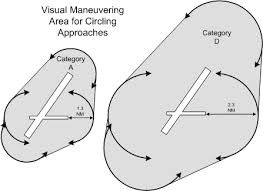Circling

Corita Kent (Sister Mary Corita): tomorrow the stars (1966)
Inscriptions and Marks — Signed: l.r.: Sister Mary Corita (not assigned): Printed text reads: come alive / Tomorrow, the stars
"The East was looking iffy after Cheverly."
I employed a Circling process when searching for a place for us to live. Circling makes it particularly difficult to assess progress because the ending point of a Circling route is always back at the starting point. It often seems as though absolutely no progress has been made, affecting motivation. The only clues that I had been doing anything all day were the fresh marks on the master map denoting identified unsuitable areas. The Circling eventually managed to winnow down what seemed like infinite choices into a more blesséd few. I figured that any day I could disqualify an area had been well spent. I might not have produced any likely candidates, but if I had managed to eliminate territory, I wouldn't have to worry about further canvassing that area.
The elimination began before we started searching when we decided Northern Virginia would be unsuitable for our habitation. Though Virginia's northern suburbs had grown increasingly progressive, Virginia's state government was regressive, having been conservative since well before the Civil War. We saw much evidence of overt racism there in those early months of the first Obama term. Plenty of Joker posters portraying our President as a Batman villain and other shit neither of us wanted anything to do with. A popular slogan at the time insisted that Virginia Is For Lovers, but it seemed more for haters to us. We'd focus our house hunt on DC and the Maryland suburbs, where we were much more likely to find civil governments and citizens. I swear the only conservatives in DC must be carpetbaggers. The natives there are as liberal as Jesus was and just as hospitable. Maryland, near the DC border, is likewise overwhelmingly liberal, so we focused our Circling there.
I remember checking out Cheverly, an eastern suburb of The District, just over the Maryland line. I hopped the Metro Orange Line from the Rosslyn station and rode through fourteen stops to Cheverly. This route reassured me because The Muse's office was on the Orange line, and commuting would be simplified by not changing trains. The Cheverly station was distinctly suburban, seemingly far removed from pretty much everything. There were no adjacent shops, just long pedestrian-hostile approaches that melted into distinctly suburban streets. Distinctly suburban streets lacking sidewalks. They had been designed exclusively for cars, not people. As usual, I'd left my map behind so I could learn from direct experience and perhaps get lost. However, I'd eyeballed my route and continued walking, thinking that I'd eventually stumble upon the center of that suburb, but I never did. I walked much further than I'd planned, so far that I had no desire to retrace my steps to return, so I continued forward, if not necessarily anywhere useful.
I imagined that if I kept heading west, I'd eventually hit some bus line or Metro station that might circle me back toward Rosslyn, my starting point and destination that day. I walked my butt off. Eventually, I stumbled upon an arterial that seemed to be heading in the right direction. If Cheverly's streets had been pedestrian-hostile, the arterial was worse. It had no provision for pedestrians at all, and even featured almost pedestrian-proof barriers intended to prevent me from getting across, along with six lanes of screaming traffic. I managed to get myself across and headed in what I figured might be the right direction. I'd already crossed Cheverly off the list as a possible home. I later learned that their Metro station was the least used in the system for years. That was likely because it was nearly inaccessible except by car, a significant design flaw.
After another hour or more, that arterial started showing bus stops. I stopped at a Popeye's for water and a rest, then stood at a bus stop, hoping something featuring a recognizable destination might approach. One finally did, though it was full of rowdy school kids apparently on their way home. I had not yet learned how to read the local body language, and theirs seemed hostile. I made more generous interpretations and took a seat mid-cabin. Someone started playing a loud boombox, making the students even more rowdy, though I sensed I was witnessing routine energy release. More kids piled in until the bus was filled to overflowing. I'm trying to determine my position relative to anything I might recognize. I figured by dead reckoning that I must have been near the National Arboretum. The bus finally stopped at a Metro station, and I exited, exhausted and a little humiliated.
I stumbled home, closing that day's Circling humbled and wiser. I'd crossed off as impossible another suburb and even felt like I'd accomplished something. I had visited another edge of the city, and though I'd eliminated that edge from our search, I had gained some on-the-ground knowledge of how places were connected, which might prove helpful later. Had I followed a map, I might have avoided the long walk and harrowing arterial, but what would I have learned about my environment? Avoiding difficulty rarely teaches me anything. It would require some courage, but I'd find another neighborhood to challenge the following day and the one after until I managed to see where my endless Circling might finally converge. It would take months. We'd rejected the South. The Northwest was Metroless and, therefore, useless. The East was looking iffy after Cheverly. I'd focus on the North and Northeast next.
©2024 by David A. Schmaltz - all rights reserved


